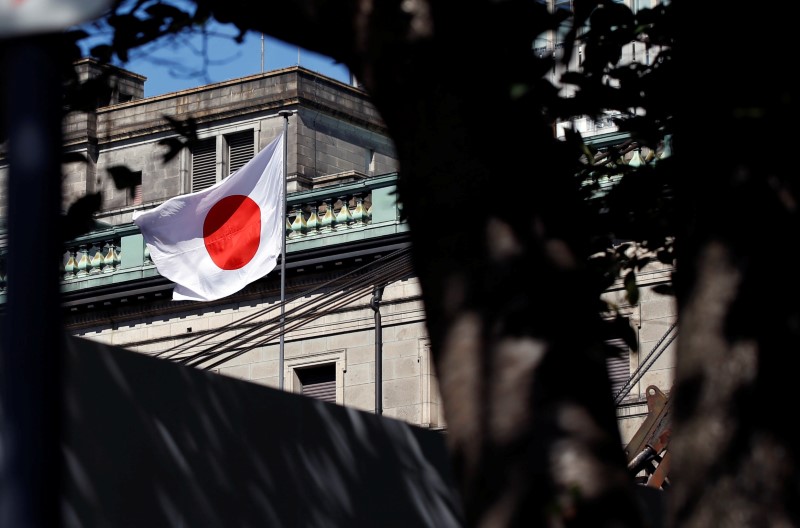By Leika Kihara and Stanley White
TOKYO (Reuters) - Japan's central bank kept policy steady on Friday but ditched a timeframe it had set for hitting an inflation target, in a surprise move analysts say is aimed at keeping market expectations for more stimulus in check.
The Bank of Japan at its policy meeting maintained an optimistic view of the economy but flagged downside risks to the consumer price outlook, underscoring the challenge of eradicating the public's sticky deflationary mindset.
Some economists say the omission of an inflation target timeframe is designed to create a better framework for the central bank to communicate with markets.
"By dropping the timeframe, the BOJ can avoid facing pressure for further easing if the timing is delayed again. It can also prevent market players from linking the timing of hitting the target with an exit strategy from easy policy," said Noriatsu Tanji, chief bond strategist at Mizuho Securities.
"In that sense, you may say that BOJ can have more policy flexibility without the timeframe but that doesn't mean it has given up on the price target altogether."
As widely expected, the BOJ maintained a pledge to guide short-term interest rates at minus 0.1 percent and the 10-year bond yield around zero percent by a 8-1 vote.
New deputy governor Masazumi Wakatabe, an advocate of huge money printing, voted with the majority, defying some market speculation he could propose topping up stimulus.
KEEPS FIRM ECONOMIC VIEW
In a quarterly review of its projections, the BOJ left its inflation forecast for next fiscal year unchanged from three months ago, at 1.8 percent.
It also projected inflation of 1.8 percent for the following fiscal year, underscoring its view a strengthening recovery will sustain price growth toward its 2 percent target.
However, the BOJ removed a phrase on the timing for achieving its price target in an acknowledgement that meeting the goal was taking more time than expected.
The central bank had been forced to push back the timeframe six times due to subdued inflation. Analysts have criticized as too optimistic the bank's latest projection made in January that the price goal will be achieved during fiscal 2019.
"The BOJ has become more realistic in its communication to become more credible," said Masayuki Kichikawa, chief macro strategist at Sumitomo Mitsui Asset Management.
"The board has shifted the balance between sending a strong message to influence inflation expectations and sending a realistic message about prices."
The BOJ's approach to policy communication came into the spotlight late last year, after a series of what the market interpreted as conflicting messages by its central bankers that rattled financial markets.
In the quarterly report on Friday, the BOJ maintained its view the economy was expanding moderately and said its inflation forecasts for the coming years were roughly unchanged from three months ago.
But the central bank added that risks to the inflation outlook were skewed to the downside, as it could take longer than expected for companies to raise wages and translate higher costs to households.
"The momentum for achieving our price target is maintained, but lacks steam," it said.
Financial markets are on the look-out for what BOJ Governor Haruhiko Kuroda says in his post-meeting briefing on the effect rising U.S. Treasury yields could have on the BOJ's policy capping Japanese long-term rates around zero percent.
The meeting marks the fifth anniversary since Kuroda, who was reappointed for another five-year term, deployed a massive asset-buying program to break Japan out of deflation and accelerate inflation to his 2 percent goal.
The BOJ's huge bond purchases have kept Japanese bond yields stable, even as benchmark 10-year U.S. Treasury yields climbed above 3 percent for the first time in four years.
That has caused U.S.-Japan yield differentials to widen in the dollar's favor, leaving the yen lower in a welcome boost to Japan's export-reliant economy.
Japanese policymakers generally favor a weak yen as it gives the country's exports a competitive advantage overseas. It also pushes up import costs and works to accelerate inflation.
